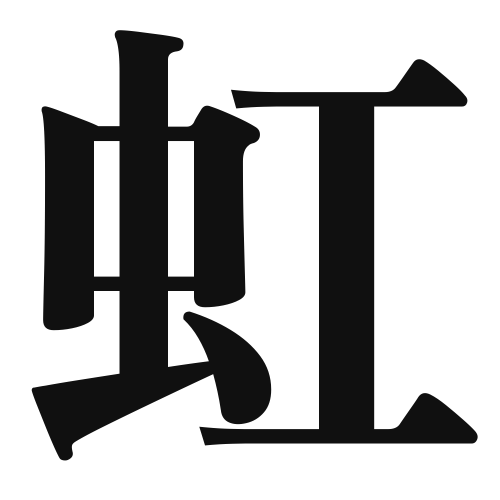1. Overview of Meaning
The kanji “虹” (niji) means “rainbow.” It represents the beautiful arc of colors that appears in the sky when sunlight refracts through water droplets after rain.
2. Formation and Radical
Formation of the Kanji: The kanji “虹” is a compound character that combines elements to convey its meaning. It is not a pictogram or ideogram but rather a character that has evolved over time.
Radical: The radical for “虹” is 虍 (tiger), which is often associated with the idea of stripes or patterns, similar to the bands of color in a rainbow.
3. Examples of Usage
Common Words and Phrases:
- 虹色 (nijiiro) – “rainbow color”
- 虹の橋 (niji no hashi) – “rainbow bridge”
Example Sentences in Daily Conversation:
- 雨が上がった後、虹が見えた。 (Ame ga agatta ato, niji ga mieta.) – “After the rain stopped, I saw a rainbow.”
- 虹色の傘を持っている。 (Nijiiro no kasa o motte iru.) – “I have a rainbow-colored umbrella.”
4. Synonyms and Antonyms
Similar Kanji:
- 光 (hikari) – “light,” which relates to the light that creates a rainbow, but does not have the same visual representation.
Antonyms:
- 暗 (kurai) – “dark,” which represents the absence of light and is the opposite of the bright colors of a rainbow.
5. Cultural and Historical Background
Connection to Japanese Culture: In Japanese culture, rainbows are often seen as symbols of hope and beauty. They are sometimes associated with good fortune and are featured in various artworks and literature.
Proverbs and Idioms: One common saying is “虹の橋を渡る” (niji no hashi o wataru), which means “to cross the rainbow bridge,” often used metaphorically to describe a transition or journey to a better place.
